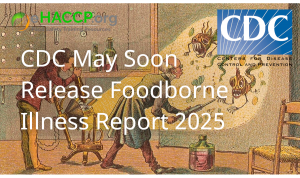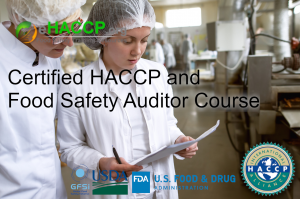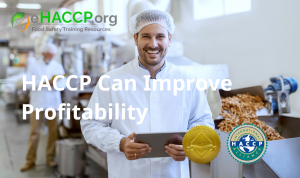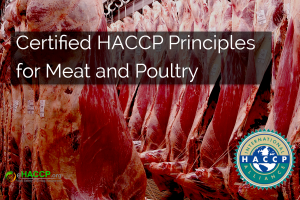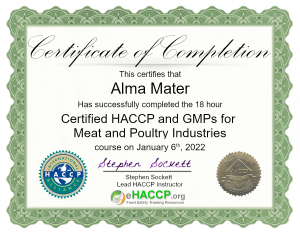Upcoming CDC Report: Foodborne Illness Acquired in the United States
CDC plans to publish updated estimates of the number of U.S. domestically acquired foodborne illnesses, hospitalizations, and deaths.
CDC plans to publish updated estimates of the number of U.S. domestically acquired foodborne illnesses, hospitalizations, and deaths 2019 caused by seven significant pathogens. The pathogens are Campylobacter spp., Clostridium perfringens, invasive Listeria monocytogenes, norovirus, Salmonella (nontyphoidal), Shiga toxin-producing Escherichia coli (STEC), and Toxoplasma gondii.
Highlights
9.9 million: The number of domestically acquired foodborne illnesses that six pathogens caused CDC estimates: Campylobacter spp., C. perfringens, invasive Listeria, norovirus, Salmonella, and STEC.
53,300: The number of hospitalizations the CDC estimates resulted from domestically acquired foodborne illnesses caused by all seven pathogens.
931: The CDC estimates the number of deaths from domestically acquired foodborne illnesses caused by all seven pathogens.
Norovirus, Campylobacter spp., and Salmonella: The CDC estimates that these pathogens caused the most domestically acquired foodborne illnesses.
Salmonella, Campylobacter spp., norovirus, and invasive Listeria are the pathogens that the CDC estimates caused the most fatal domestically acquired foodborne illnesses.
What were the results of the 2011 report? As taken from the CDC.
"Foodborne Illnesses
We estimate that each year in the United States, 31 pathogens caused 37.2 million (90% CrI 28.4–47.6 million) illnesses, of which 36.4 million (90% CrI 27.7–46.7 million) were domestically acquired; of these, 9.4 million (90% CrI 6.6–12.7 million) were foodborne (Table 2). We estimate that 5.5 million (59%) foodborne illnesses were caused by viruses, 3.6 million (39%) by bacteria, and 0.2 million (2%) by parasites. The pathogens that caused the most illnesses were norovirus (5.5 million, 58%), nontyphoidal Salmonella spp. (1.0 million, 11%), C. perfringens (1.0 million, 10%), and Campylobacter spp. (0.8 million, 9%).
Hospitalizations
We estimate that these 31 pathogens caused 228,744 (90% CrI 188,326–275,601) hospitalizations annually, of which 55,961 (90% CrI 39,534–75,741) were caused by contaminated food eaten in the United States (Table 3). Of these, 64% were caused by bacteria, 27% by viruses, and 9% by parasites. The leading causes of hospitalization were nontyphoidal Salmonella spp. (35%), norovirus (26%), Campylobacter spp. (15%), and T. gondii (8%).
Deaths
We estimate that these 31 pathogens caused 2,612 deaths (90% CrI 1,723–3,819), of which 1,351 (90% CrI 712–2,268) were caused by contaminated food eaten in the United States (Table 3). Of these, 64% were caused by bacteria, 25% by parasites, and 12% by viruses. The leading causes of death were nontyphoidal Salmonella spp. (28%), T. gondii (24%), L. monocytogenes (19%), and norovirus (11%)."
When will the report be released?
"The CDC has not announced a specific release date for its 2025 report on foodborne illness hospitalizations and deaths. However, based on historical patterns, the CDC typically releases such updates annually, often in the first half of the year. Given this, you might expect the release sometime in the first few months of 2025, potentially around late winter or early spring. For the most accurate and up-to-date information, it would be best to check the CDC's official website or follow their announcements on their social media or press releases." As stated by the CDC.
The report may be published as early as the end of 2025. However, this is only speculation based on off-the-record conversations with individuals working with and for the CDC.
Who reads this report?
As an HACCP and food safety training company, eHACCP.org relies on current statistics from the CDC to keep its HACCP training and HACCP certification content current.
Federal, state, and local health departments use the data to monitor trends, respond to outbreaks, and plan public health interventions.
Agencies such as the U.S. Food and Drug Administration (FDA), the U.S. Department of Agriculture's Food Safety and Inspection Service (USDA-FSIS), and state agricultural departments use this information to set policies, regulations, and standards for food safety.
Researchers and Epidemiologists analyze the data for academic research to develop new detection and prevention methods and understand foodborne disease epidemiology.
Food Industry professionals like food manufacturers, processors, and retailers use the data to improve their safety protocols, identify high-risk areas in their supply chain, and respond to outbreaks.
Physicians, nurses, and other healthcare workers might use these reports to stay informed about common pathogens, symptoms, treatment options, and prevention strategies for their patients.
Organizations focused on consumer rights and food safety use these reports to advocate for better regulations, educate the public, and sometimes challenge industry practices.
Educators and Academics in educational settings use it to teach public health, microbiology, epidemiology, and food science.
Media and journalists report on the statistics, trends, and specific outbreaks to inform the public and raise awareness about food safety issues.
While the raw data might be complex for the average person to interpret, summaries, news articles, or public health advisories based on these reports reach the public and influence consumer behavior and awareness.
Policymakers and legislators may use the data to inform legislation, funding decisions, and public health policy related to food safety.
This wide readership underscores the importance of these reports in shaping policy and practice in food safety and public health. However, specific interest in detailed reports might vary, with some groups focusing more on executive summaries or particular sections relevant to their work.
About eHACCP.org
eHACCP.org is an online HACCP training and food safety training site for food manufacturers, processors, producers, water bottlers, and anyone in the food industry. Our partner subject matter experts come from industry and government to ensure that the online training courses meet and exceed the minimum requirements of both regulatory and industry entities.
eHACCP.org develops, authors, and supports content in association with food safety consultants, USDA and FDA inspectors, university outreach and extension coordinators, veterinarians, biochemists, biologists, business owners, and operators, instructional designers, and many other professionals whose goal is to develop and create content that promotes the most robust food safety posture for less money.
Stephen Sockett
eHACCP.org
+1 866-488-1410
email us here
Visit us on social media:
Facebook
X
LinkedIn
YouTube
Other
Video overview of eHACCP.org. HACCP training and certification for food companies; producers, processors and manufacturers, meat and poultry, seafood, etc.
Legal Disclaimer:
EIN Presswire provides this news content "as is" without warranty of any kind. We do not accept any responsibility or liability for the accuracy, content, images, videos, licenses, completeness, legality, or reliability of the information contained in this article. If you have any complaints or copyright issues related to this article, kindly contact the author above.

